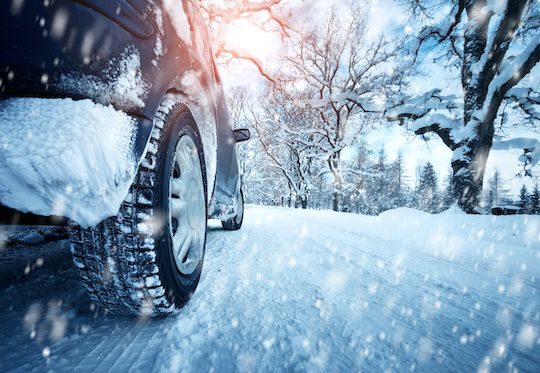Is It Safe To Drive In Snow?

Driving in snow brings increased risks. The heavier the snow, the greater the risks.
In this post we’ll outline some essential hints and tips for staying safe in the snow.
Why Driving in Snow is Dangerous
Heavy snowfalls can severely reduce your visibility, so you may not see some hazards until it’s too late.
Ice and snow can be slippery. This can affect your acceleration, your steering, and your braking. In fact, your braking distance can be up to 10 times greater in icy conditions.
Cold weather can affect your car’s battery, and it’s all too easy to get stuck in a snowdrift. Would you know what to do if your car got stranded in the snow?
Is It Safe To Drive In Snow? Assessing Your Journey
If the weather’s particularly bad, it might be best to avoid your journey entirely. So when it’s snowing, you should thoroughly assess every journey before you set out:
Do you really need to make this journey? If you’re visiting friends, could you delay the visit until the weather’s improved? If you need something from the shops, is there a shop nearby that you could walk to instead? Do you need to commute to work, or is it possible to work remotely?
Check the forecasts. The UK Met Office will issue clear warnings when the weather is likely to create hazardous conditions for drivers. But even if they don’t, be sure to check the forecast before you set out. Also be sure to check the forecast for your entire The weather might be fine at your starting point, but there could be a raging blizzard at your end destination.
Plan your route. If you absolutely have to drive, plan your journey carefully. Give yourself plenty of time so that you’re not tempted to rush, and you can instead drive as slowly and carefully as possible. Try to stick to major roads, as these are most likely to be gritted and well-lit. Avoid country roads as much as possible, especially at night.
Preparing Your Car for Driving in Snow
Before you set out:
Clear all the snow from your car. From the bonnet, the windscreen and, especially, the roof. Snow on your car’s roof can easily slide down and obscure your view while you’re driving, which is why you have a legal duty to clean it off before you start.
Clear all windows. Make sure your front windscreen is completely de-iced and demisted before you set out. Don’t be tempted to use hot water to quickly clear your windscreen, as this can lead to cracks and shattering. Instead, use a good de-icer and an ice-scraper.
Perform all necessary checks. It’s a good idea to get a full car service at the start of winter, to ensure that you have the right levels of oil, brake fluid, and other fluids. Beyond this, before any journey, check that all of your lights are working, and that you have sufficient windscreen wiper fluid, along with enough to top you up should you run out.
Pack a winter car survival kit. Above we mentioned how some people get stranded while driving in the snow. This might happen to you, so it’s important to be prepared. Pack your car with a blanket or extra layers of clothes; a shovel; a charger or replacement battery for your phone; a torch with a replacement battery; and snacks such as fruit, nuts, or cereal bars. Also make sure you have a number for breakdown recovery on you at all times.
Are You Ready For a Snowy Winter?
We’ve got a full guide to staying safe while driving in ice and snow.
As breakdowns can be more common in cold weather, now might be a good time to add breakdown cover to your comprehensive car insurance policy.
Read our full guide to what breakdown cover is, and how it works, here.




